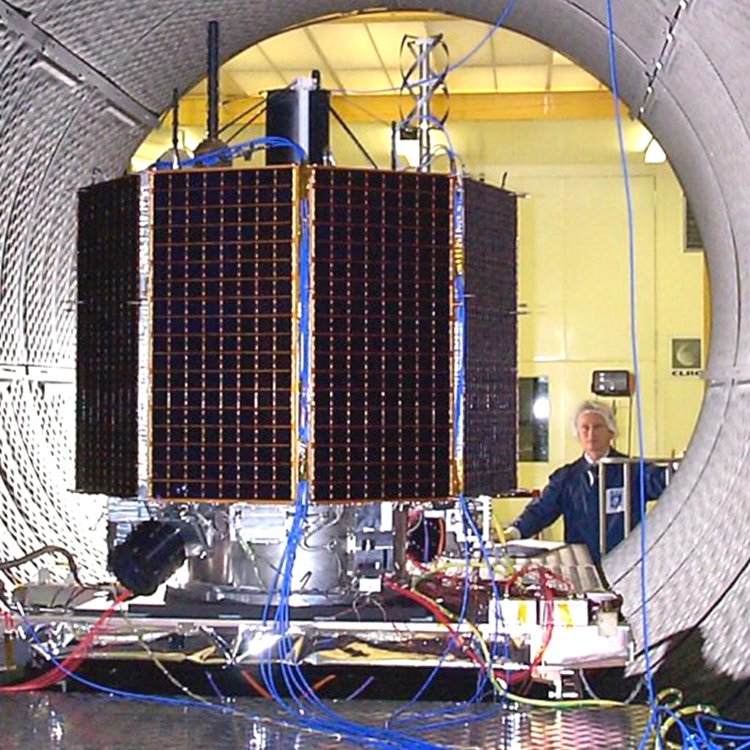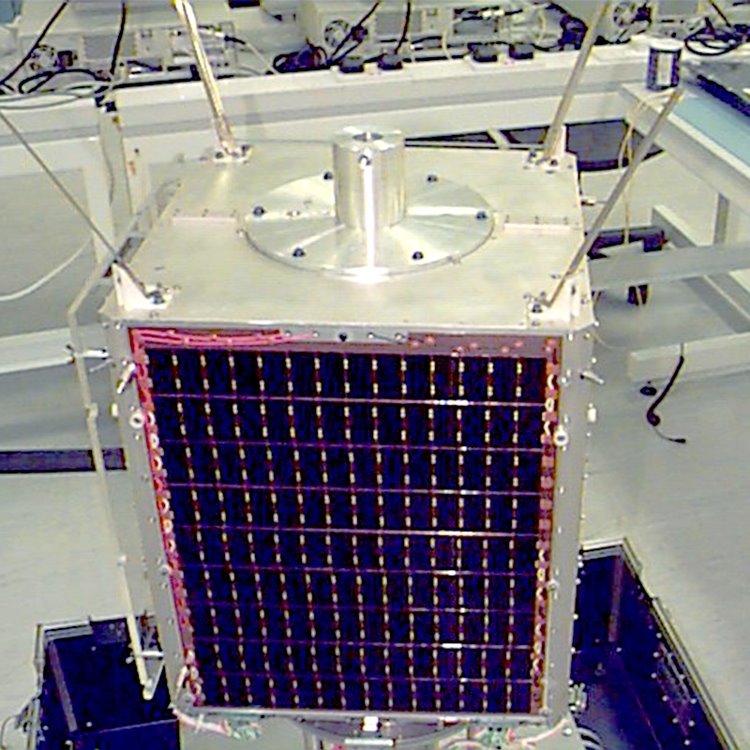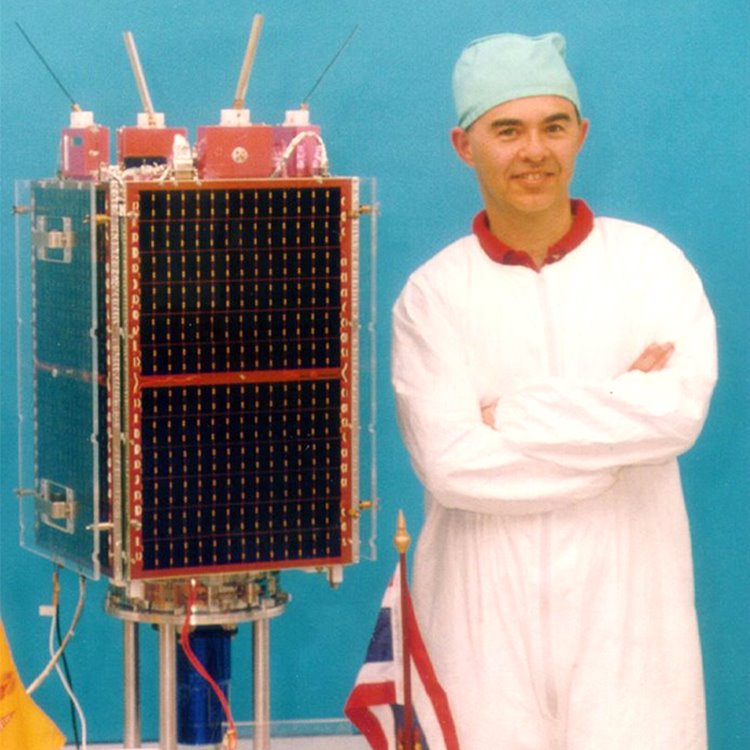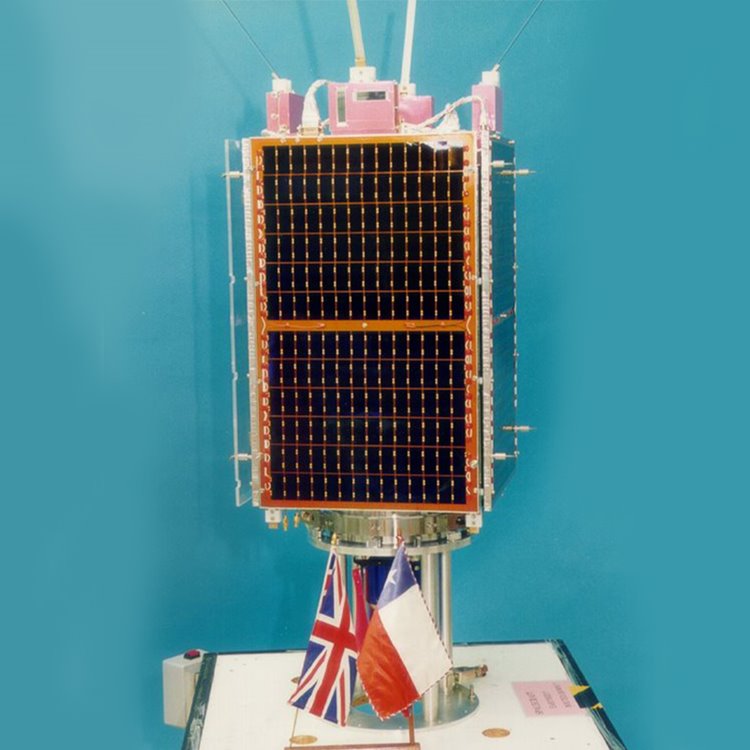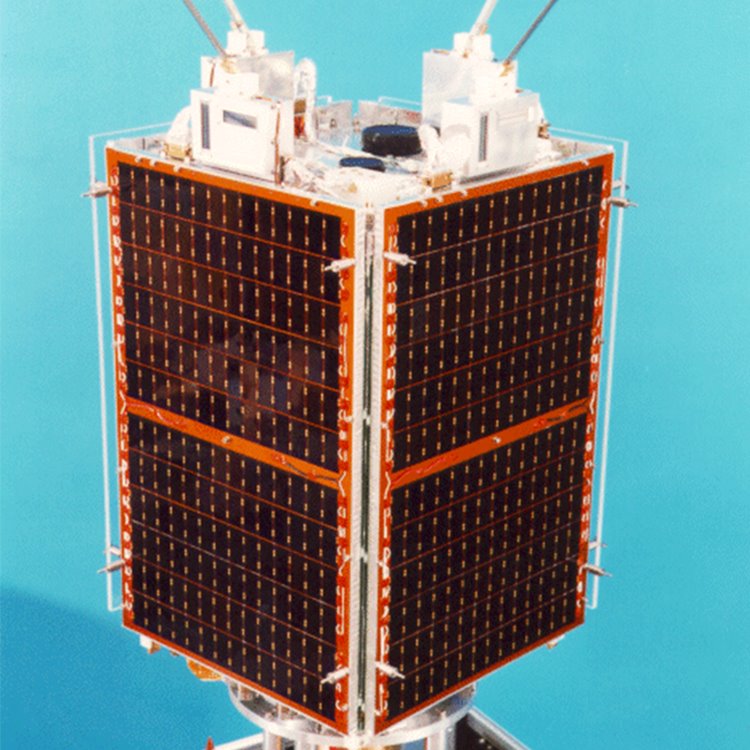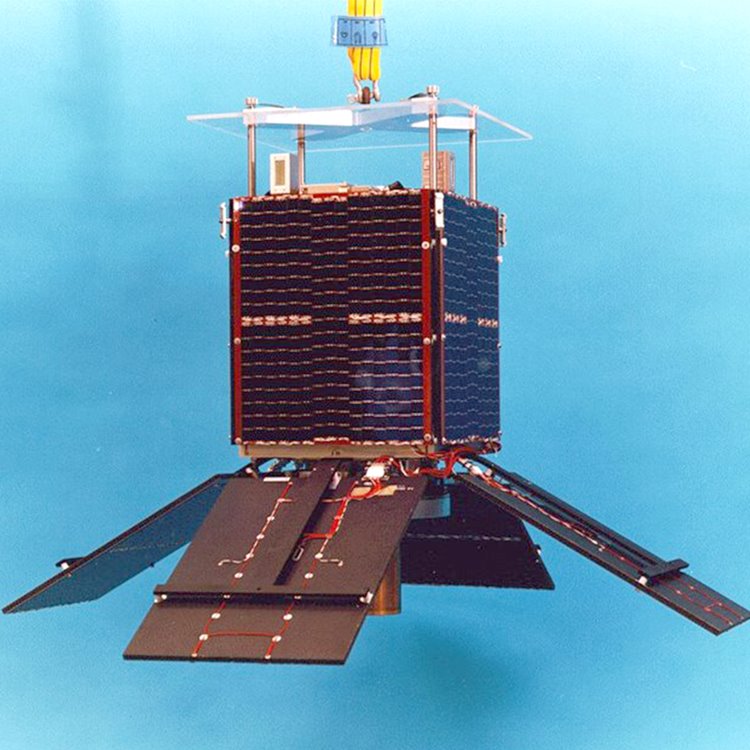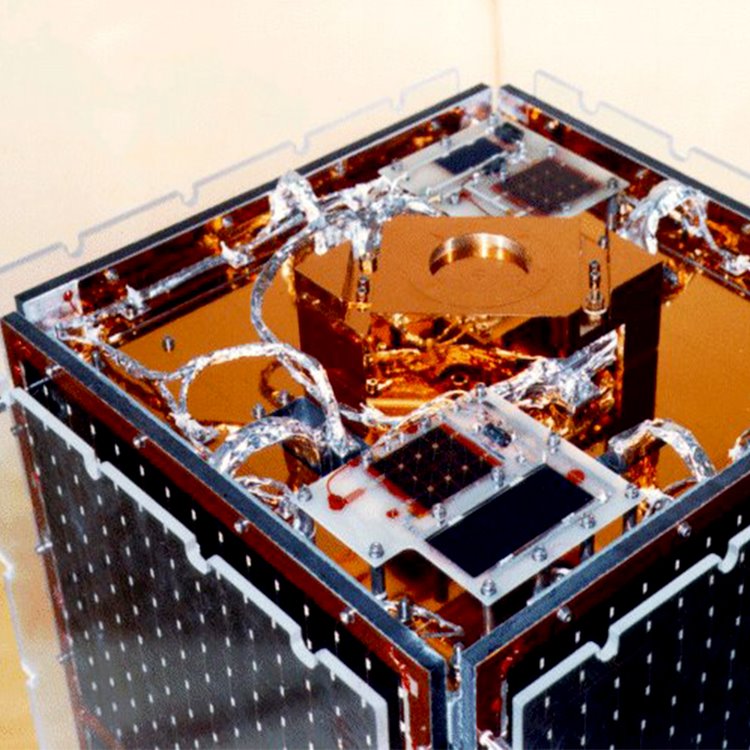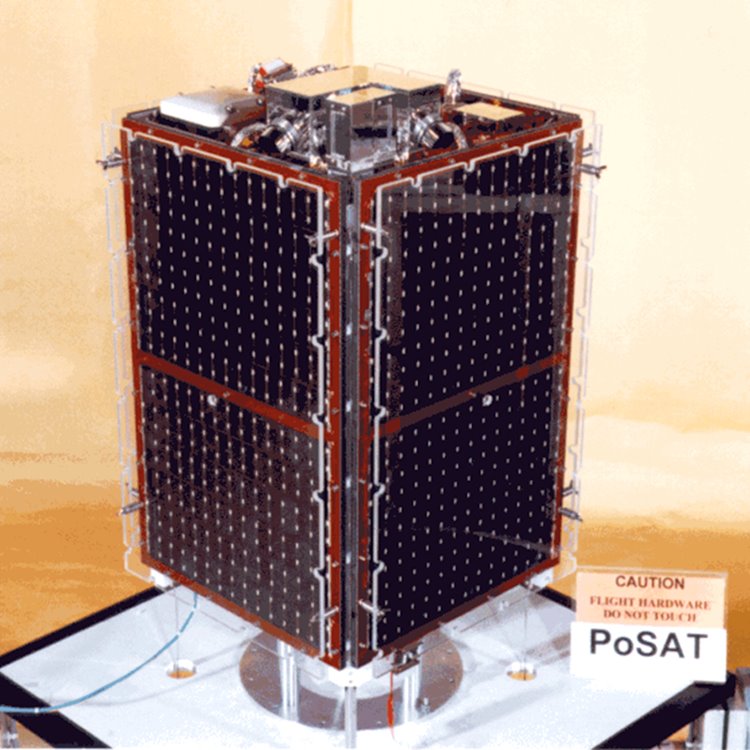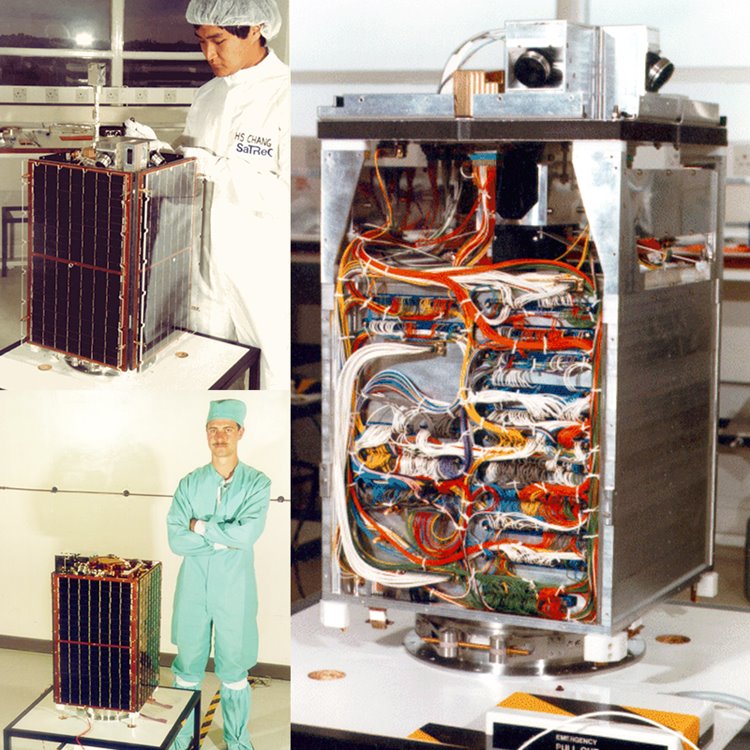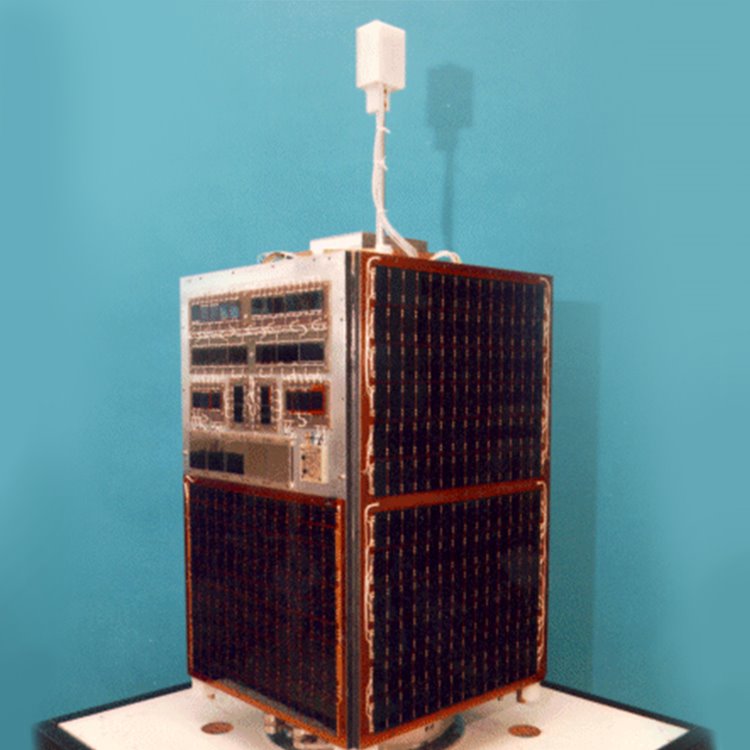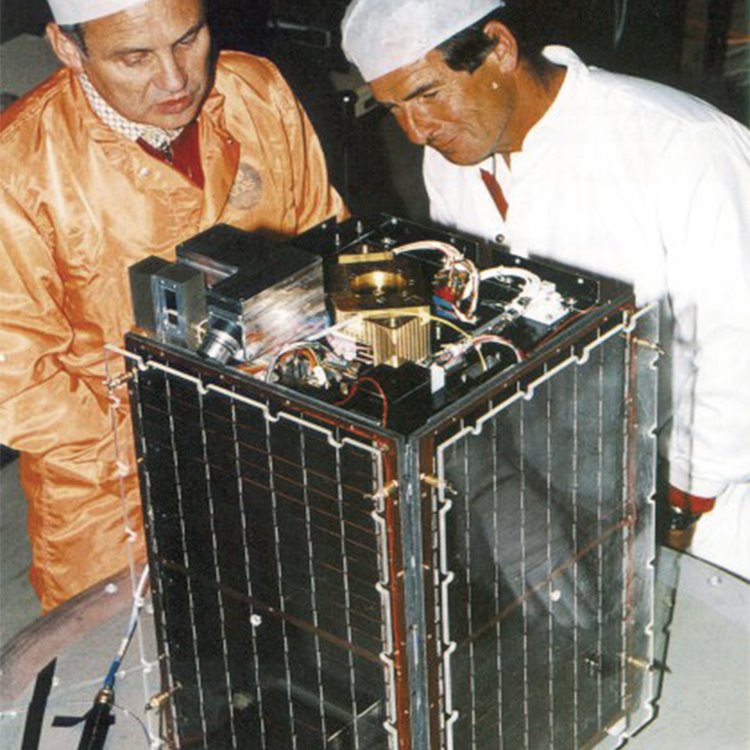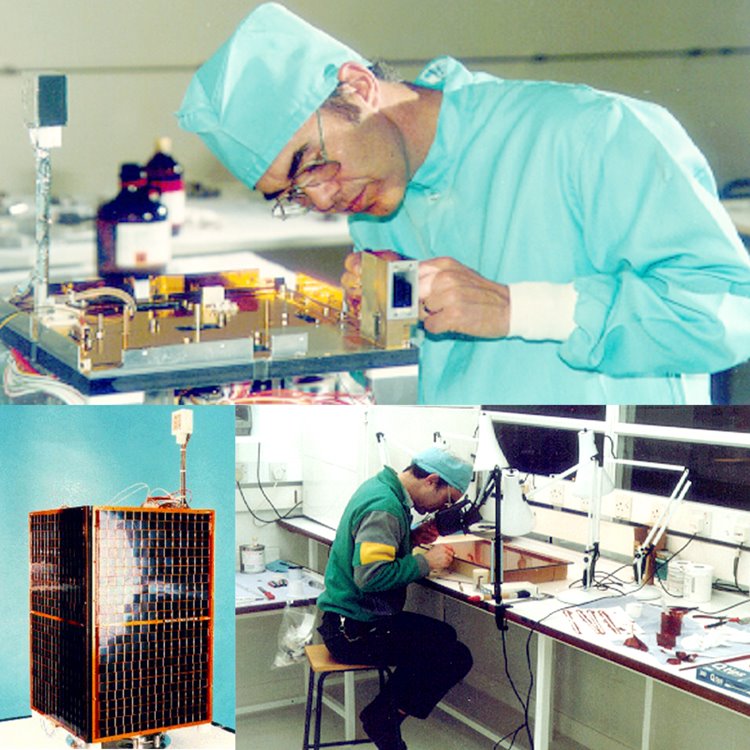UoSAT-12: Launched 1999
UoSAT-12 was an experimental mission used to demonstrate and test a number of new technologies, including imaging cameras, and a high-speed 1 Mbit/s S-band downlink (the MERLION experiment). An Internet Protocol stack was uploaded to the satellite, allowing experiments in extending the Internet to space to be made by NASA Goddard as part of its Operating Missions as Nodes on the Internet (OMNI) effort.
In January 2000, UoSat-12 imaged a lunar eclipse. It also achieved a number of "Firsts" in space - click Discover More.
